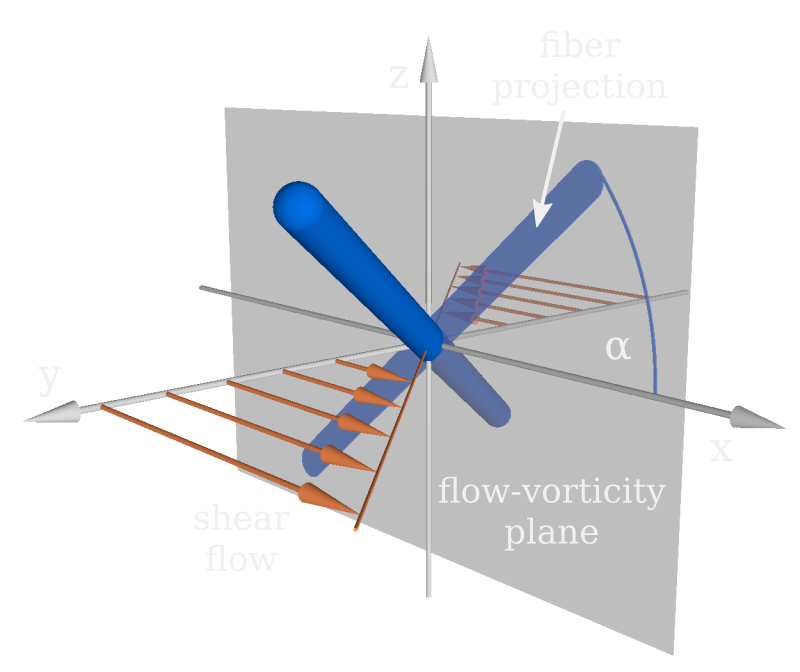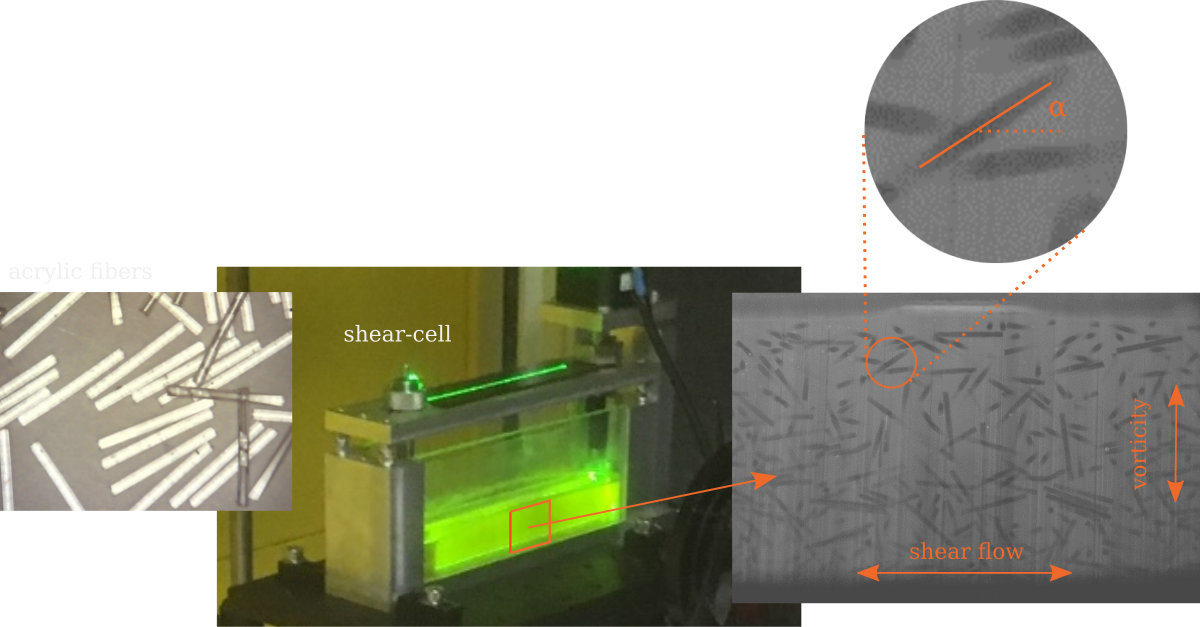Complex Fluid Dynamics
Butler Research Group




Shearing a collection of rods suspended in a viscous fluid alters the orientation distribution, which in turn alters the effective viscosity of the fluid. In the case of steady shearing flows, the fibers tend to align in the direction of flow. However, fibers suspended at high concentration can be aligned in the vorticity direction by an oscillatory shearing flow within a confined geometry. Images above show the initial fiber microstructure and after 400 and 4000 oscillations. Alignment in the direction transverse to the flow gradient plane is observed, with stronger alignment near the
bounding walls than in the center of the gap (see images on right showing slices through the center and near the wall). The value of Sα = 1 - 2<cos2α> indicates the averaged alignment of the collection of fibers, where α is defined in the figure to the right. A value of zero indicates random alignment, while Sα = 1 indicates perfect alignment with the vorticity axis. Alignment depends on the confinement (ratio of H to fiber length), concentration, and the strain amplitude.
Predictions from simulations have been validated against experiments performed using the flow cell shown below. To make the measurements, acrylic fibers were suspended within a fluid and added to the shear cell. The fluid is refractive index and density matched to the fibers; Rhodamine added to the fluid causes it to fluoresce due to the laser sheet. Images of the suspension then show the fibers as dark objects, and the angle of each fiber within the flow-vortiticy plane can be measured and then averaged to give Sα.


Relevant Publications:

